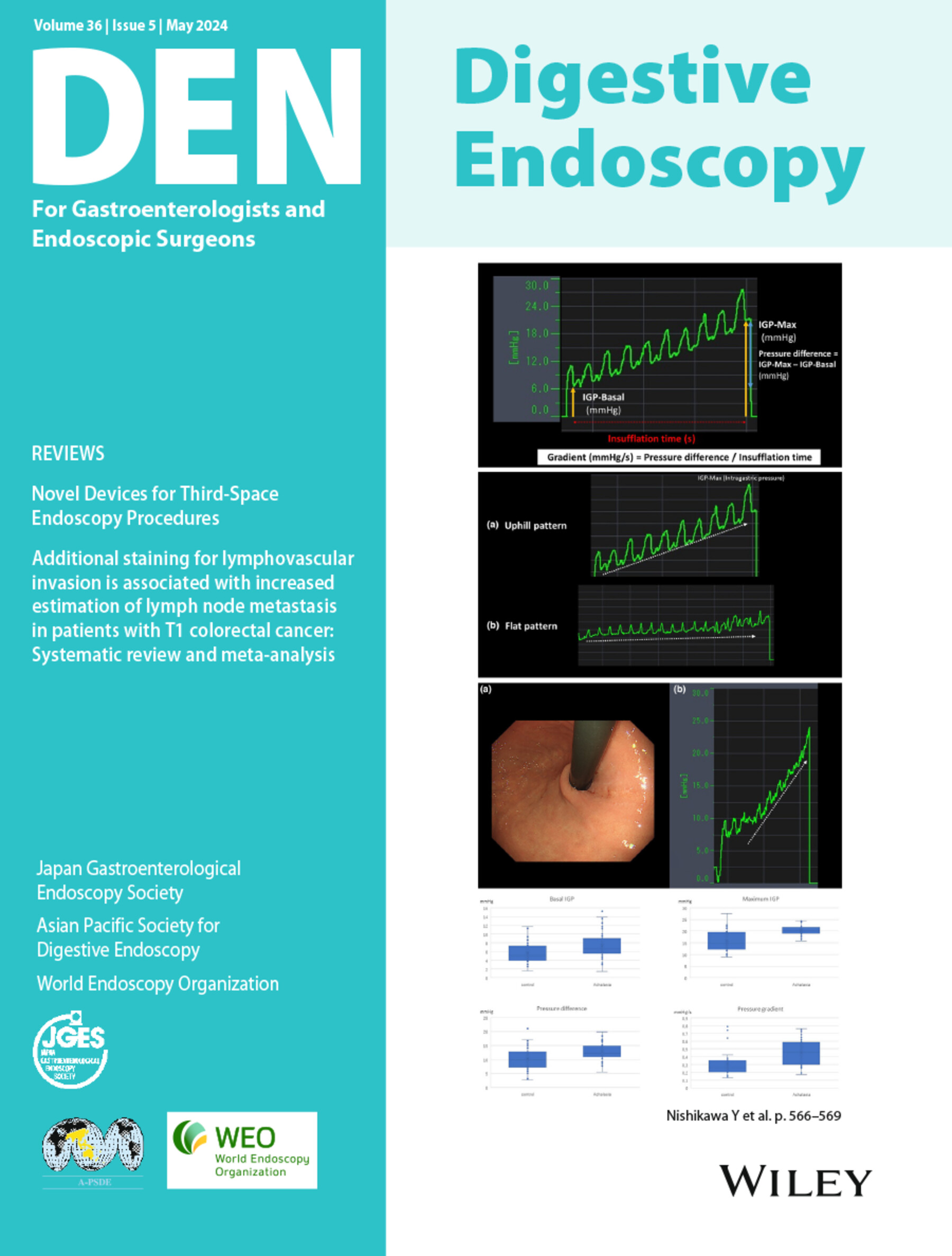How often does a mixed type intraductal papillary mucinous neoplasm on imaging indicate pathological involvement of the main pancreatic duct?
Abstract
Objectives
A pancreatic cyst >5 mm in diameter that communicates with the dilated main pancreatic duct (MPD) ≥5 mm on imaging is defined as mixed type intraductal papillary mucinous neoplasm (MX-IPMN). However, the frequency of tumor involvement of the MPD in MX-IPMN remains unknown. This study investigated how often MX-IPMNs involve the MPD and whether MPD involvement can be diagnosed by peroral pancreatoscopy (POPS).
Methods
This retrospective cohort study included patients who underwent POPS for MX-IPMN followed by surgical resection between July 2018 and December 2021. The pathological features of MX-IPMN, including tumor extension to the MPD, were analyzed. Additionally, the diagnostic performance of various imaging modalities in detecting tumor extension to the MPD was evaluated.
Results
Among a total of 15 patients, 10 (67%) had pathologically confirmed tumor extension to the MPD. In most cases with pathologically confirmed MPD involvement, the main tumor was diagnosed as high-grade dysplasia (60%) or invasive carcinoma (10%). Conversely, low-grade dysplasia was the main lesion in most cases without MPD involvement (low-grade dysplasia 80%; high-grade dysplasia 20%, invasive carcinoma 0%). The diagnostic accuracy, sensitivity, and specificity of POPS with or without biopsy was 93.3%, 90.0%, and 100%, respectively. POPS demonstrated higher accuracy and sensitivity than computed tomography, magnetic resonance cholangiopancreatography, and endoscopic ultrasonography (accuracy: 93.3%, 40%, 60%, and 80%; sensitivity: 93.3%, 10%, 40%, and 70%, respectively).
Conclusions
Overall, 67% of MX-IPMNs had pathologically proven MPD involvement. Tumor extension to the MPD is highly suspicious of malignancy, and POPS may be useful for evaluating MPD involvement.

 求助内容:
求助内容: 应助结果提醒方式:
应助结果提醒方式:


